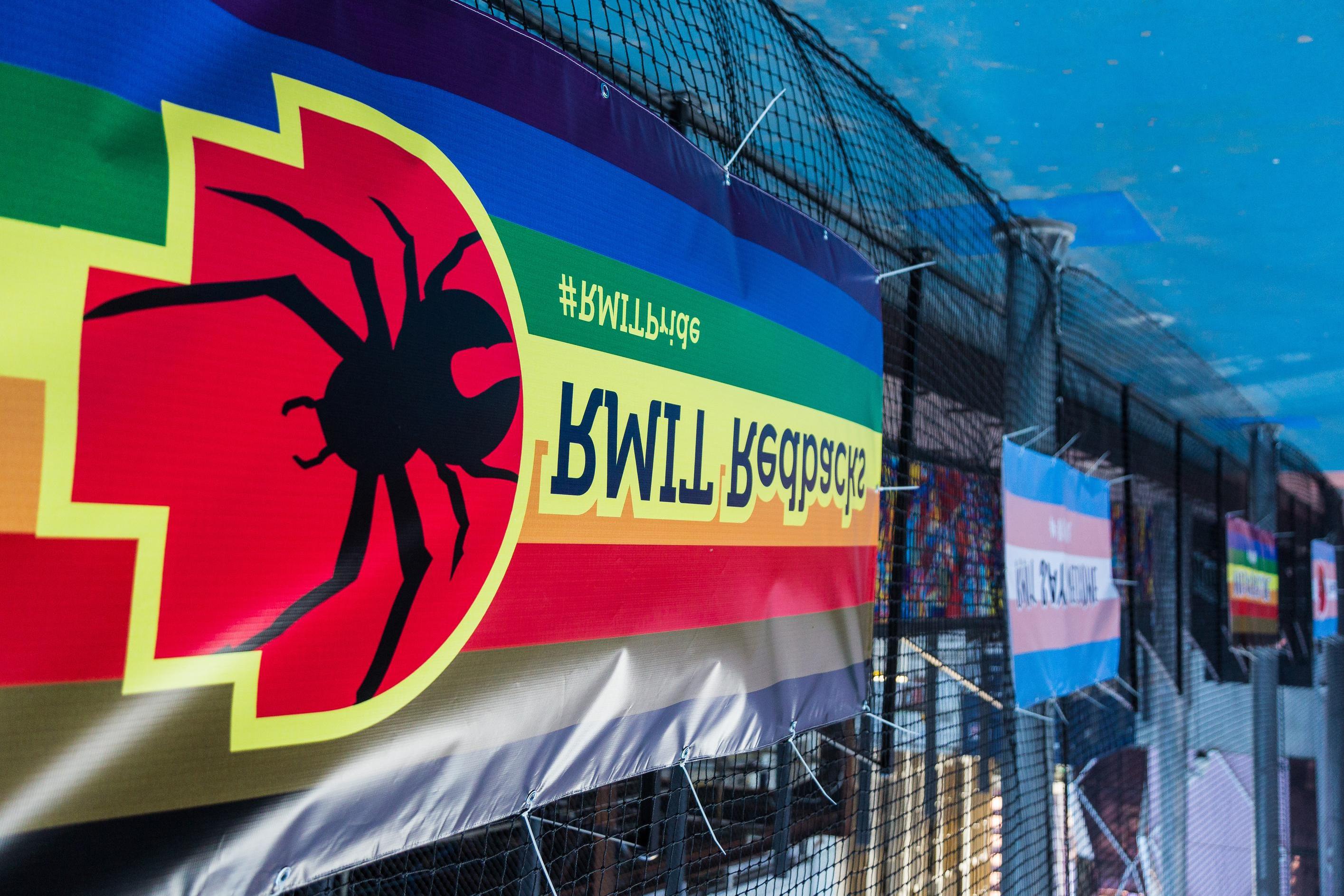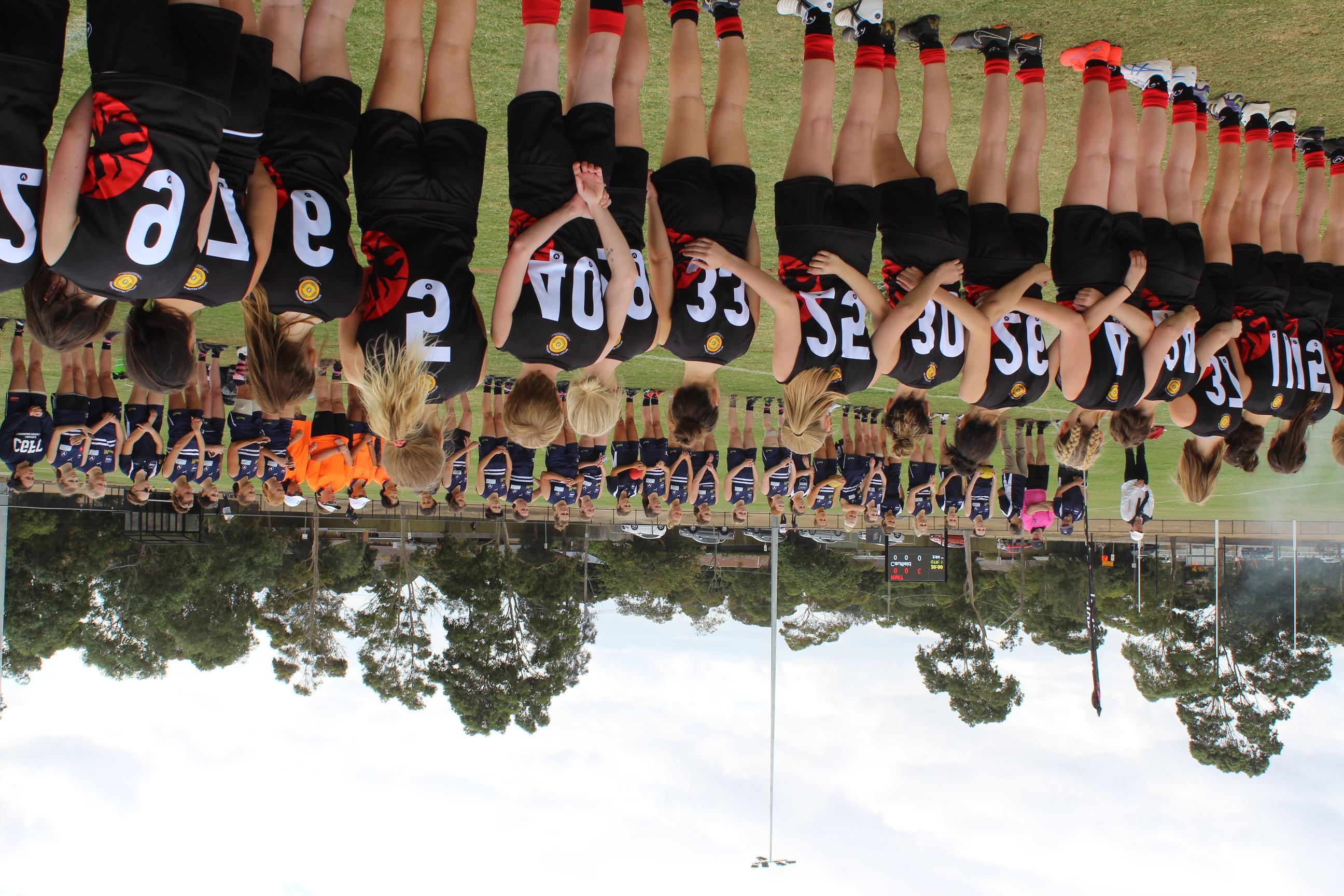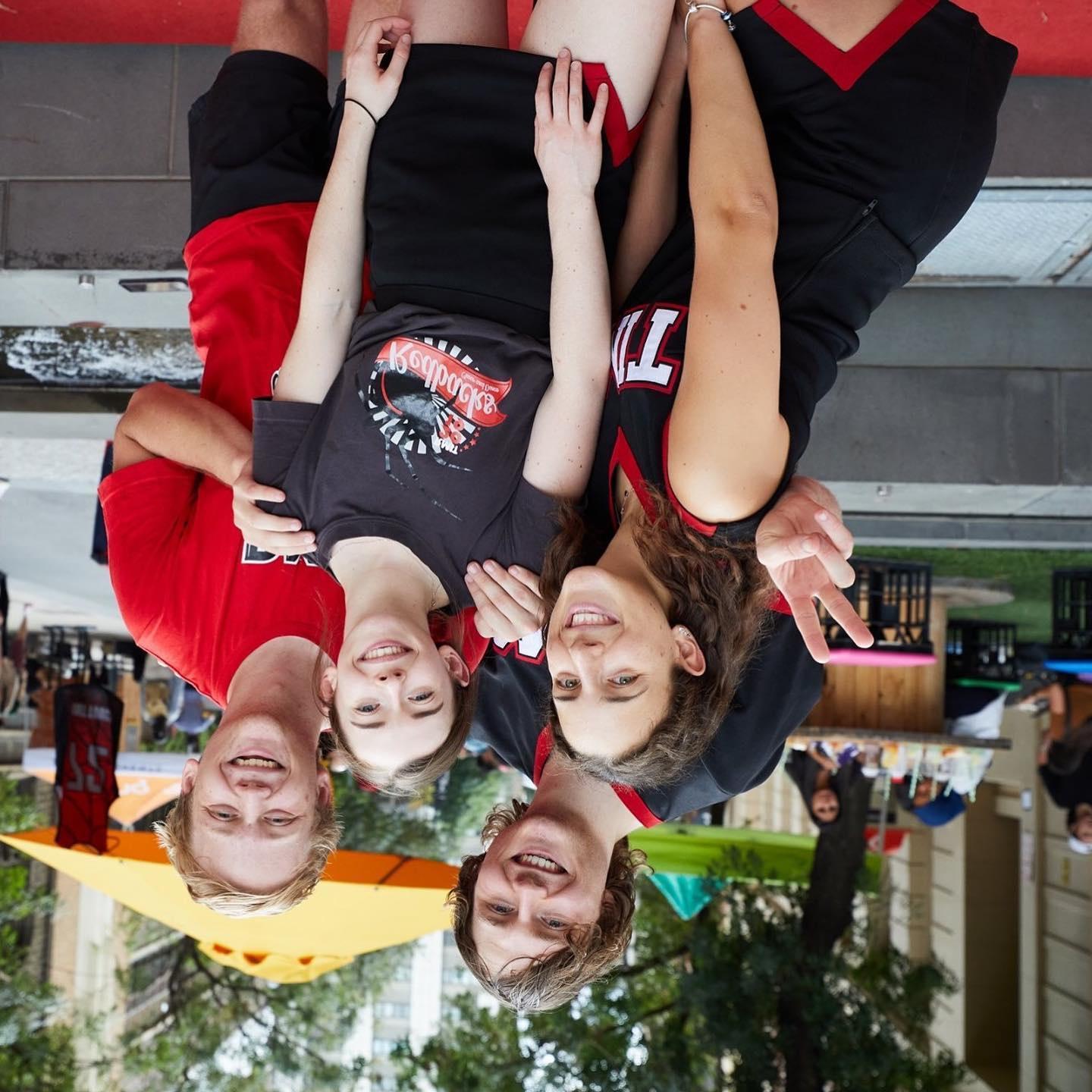
7 minute read
Diverse Genders, Sexes and Sexualities
by redbacks
6DIVERSE GENDERS, SEXES AND SEXUALITIES
Terminology
Advertisement
Ally: A person who supports, respects and advocates for another person or community for a common purpose.
Asexual: Experiencing little or no sexual attraction to others and/or a lack of interest in sexual relationships/behavior.
Bi-gender: A person who fluctuates between the binary “woman” and “man” gender-based behavior and identities, identifying with two genders.
Bisexual: A person who is emotionally, romantically or sexually attracted to the gender the same as their own and to other genders.
Cisgender or cis: A term that describes a person whose gender identity aligns with the gender assigned to them at birth.
DGSS: Reflecting the diversity of our community beyond the ‘LGBTQ+’ label, RMIT refers to people of ‘diverse genders, sexes, and sexualities’ as DGSS.
Gay: A term used to describe individuals who are primarily emotionally, physically, and/or sexually attracted to members of the same sex.
Gender affirmation: Associated with gender diversity or transgender identities, gender affirmation is an individual process someone goes through to affirm and express their identified gender.
Genderfluid: A gender identity best described as a dynamic mix of gender identities. A person may identify with a different gender throughout their life.
Genderqueer: An umbrella term for many gender non-conforming or non-binary identities (e.g., agender, bigender, genderfluid).
Intersex: People who are born with naturally occurring variations in chromosomes, hormones, genitalia and other sex characteristics.
Lesbian: A woman who is emotionally, romantically or sexually attracted to women.
Misgender: This occurs when people are addressing someone and using language that does not align with their gender identity. This can include the use of incorrect pronouns.
Non-binary: A person whose gender identity lies outside the binary of man or woman.
Pansexual: Describes someone who has the potential for emotional, romantic or sexual attraction to people regardless of sex or gender.
Transgender trans: Someone who does not exclusively identify with the gender they were assigned at birth. Trans and transgender are both accepted terms.
Queer: People who identify with a flexible and inclusive view of gender and/or sexuality. Also used interchangeably to describe the LGBTIQ+ community
Homophobia / biphobia / interphobia / transphobia: Unreasoning fear or hostility, prejudice and discrimination against people who are gay or lesbian / bisexual / intersex / transgender or gender diverse.
DGSS Inclusive Language Language shapes our understanding of topics and how we interact with others. Using inclusive language ensures we do not leave anyone out of our events and programs and individuals are seen, heard, and invited along.
Using gender neutral language: Communication plays a key role in this. Telling a teammate to ‘man up’ or that they ‘run like a girl’ both use outdated gender stereotypes and are likely to cause offence. This sort of language can also shape an understanding of what individuals believe they can achieve based on gender stereotypes. When addressing a group of people, terms such as ‘hey guys’ can easily be replaced with gender neutral options such as team, folks, friends, mates and many more.
Respecting pronouns: A person who identifies as trans, non-binary or gender diverse may not use binary pronouns such as they/them/theirs. If you do not know what pronouns someone uses, then it is best to ask or use their name when referring to someone in third person. Remember you cannot ‘tell’ if someone is trans, non-binary or gender diverse by looking at them so avoiding assumptions is key. It is okay to ask someone what pronouns they use directly or ask for pronouns on a registration form. Next time you introduce yourself try sharing your pronouns as well.
We recommend the following options when asking for title, sex, and gender data: Title – Ms, Mr and Mx Sex - female, male, intersex, prefer not to disclose Gender - man, woman, non-binary, transgender, gender queer, prefer not to disclose and a free text option
Avoiding stereotypes: Stereotypes regardless of whether they are based on gender identity, sex or sexuality reduces a person to a single characteristic and should be avoided. As well as shaping our belief of people, stereotypes can drive social judgements. Although it is very natural to judge others it is what we do with those thoughts that matter and not allowing them to lead to prejudice or influence how we treat members of our community. In sport this means not assuming women cannot be strong or that gay men do not enjoy sports and so on. The more conscious we are about our unconscious bias, the more we as a community can challenge these harmful stereotypes that hold us back from our full potential.
Learn more: Top Ten Tips to be an Effective Rainbow Ally
DGSS Days of Significance: International days of significance can be a great to align with when hosting an event or match, but not in all cases. Pride Month (June) for example, is often suitable for celebratory events such as a pride round, while 20 November is Transgender Day of Remembrance and may not be a suitable time to host a celebratory event.
6
How to host a pride game Why host a pride game?
Why host a pride game? Whether you have a friend who identifies as DGSS, or you believe in advocating for the community or you yourself identify as part of the community there are many reasons why you may want to host a pride game. You also do not need a reason, as Nelson Mandela famously said,
“Sport has the power to change the world. It has the power to inspire, it has the power to unite people in a way that little else does. It speaks to youth in a language they understand. Sport can create hope, where once there was only despair. It is more powerful than governments in breaking down racial barriers. It laughs in the face of all types of discrimination.”
Hosting a pride game brings community together and reaffirms RMIT’s commitment to DGSS inclusion. A pride game can strengthen your community in ways that will go beyond one single match and amplifies voices of DGSS people, creating more opportunities to invite everyone along.
Note: Although these tips suit a Pride Game you can applies these concepts to elevate and celebrate a broad range of identities. See section 5.5 for tips to support women in sport and section 2.4 for tips to host an Indigenous Round.
Step 1. Get Organised: First things first, make a plan and then set a date or work towards a deadline. Consult with your team or your coach and get everyone on board. Without support it can be difficult to host a pride game alone. If you would like support hosting a pride game but do not know who to speak to or where to start, contact an Inclusive Sport Champion. Once you have rallied enthusiasm for your pride game, here are some other things you may want to consider:
When will this event take place? What day/time? How much time does that allow to prepare and promote? Where will the event take place? Will it be free to attend? Who will be competing/playing/taking part? Is the event a competition or a ‘come and try’? Will there be acknowledgement for the winning team/individual? Who are the key stakeholders that should be notified of this event? How much space is there for spectators? How (if at all) will this game differ from a regular match?
6
Step 2 Raise the flag: It does not take much to host a pride game, but it is important to make sure your message is clear. Embed the inclusive language and event recommendations from this handbook into as much of your preparations as possible from start to finish and the rainbow flags will follow.
If your event is binary in nature (eg. gendered teams), how can you make it more trans and gender diverse inclusive? You may want to add some additional text such as, “Our definition of women/men is inclusive of trans, non-binary and genderqueer women/me and welcome to anyone who identifies this way” to invite everyone along.
If you are hosting an event on a day of significance (eg. Wear it Purple) you may want to consider how this day can be acknowledged. Whether it is via a social media post or an announcement on the day. Remember, what you say as an ally can have a much bigger impact than someone advocating for themselves.
Think of communicating your message in two ways:
Through push communications
Displaying pride flags, banners, and posters at the event
Wearing pride clothing at the event: socks, shoelaces, bibs, beanies etc.
Sending outgoing emails and newsletters to specific mailing lists
Through pull communications
Sharing social media posts via a public forum
An information desk where attendees can learn more about DGSS inclusion
Step 3. Amplify your message: To ensure you make the most of all the work and time you have put into hosting your pride round, document your event so that it can be experienced long after it is finished and shared with the wider community. This not only helps construct a well-rounded message but can build momentum for future rounds. Here are a few ways you can amplify your message once the game is over:
Take plenty photos to document the event Ask your attendees for feedback (eg. an online survey form) Take note of attendance Summarise the event across social media platforms Send a follow up and ‘thank you’ to those who supported







